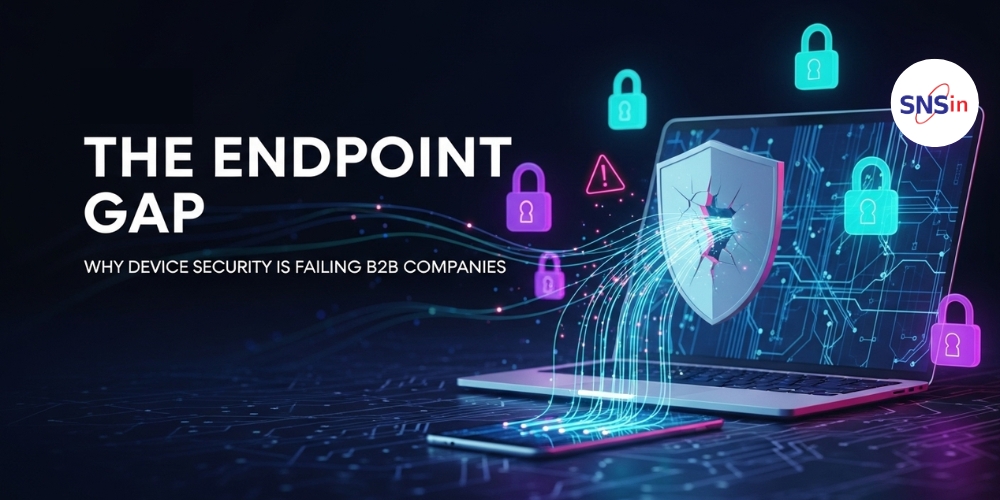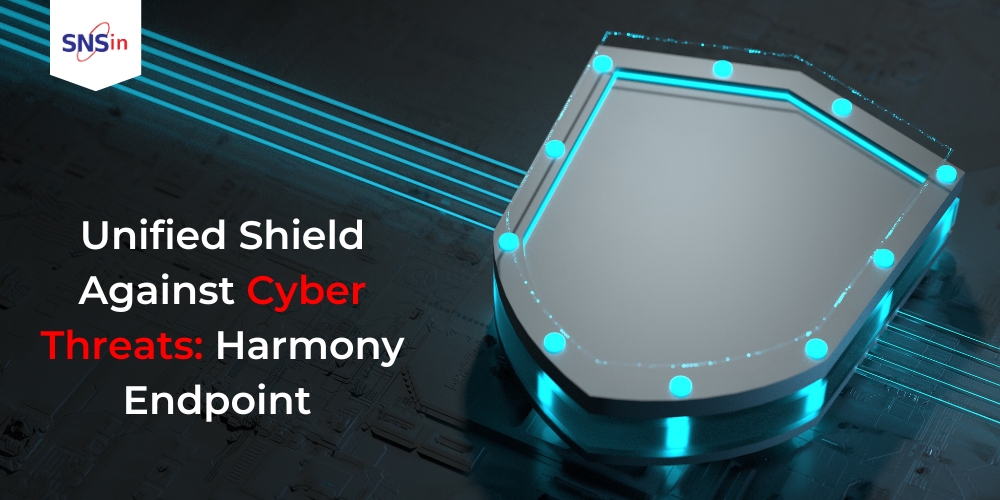Let’s play a quick game of “spot the weakest link.”:
Is it your cloud provider?
Your firewall?
Your high-level encryption?
None of the above.
It’s the humble laptop sitting in your sales rep’s home office. Or the smartphone your finance head uses while commuting. Or that BYOD tablet your field team swears by.
Welcome to the endpoint gap — the Achilles’ heel of modern B2B cybersecurity.
In 2025, businesses are more connected, mobile, and collaborative than ever before. But while companies race to digitize workflows, secure cloud systems, and integrate SaaS tools, endpoint security continues to lag behind — and attackers know it.
The Alarming State of Endpoint Security:
Let’s talk numbers before we talk strategy:
- 68% of organizations have experienced one or more endpoint attacks that compromised data or IT infrastructure in the past year.
- The average time for detection and containment of an endpoint breach is 212 days.
Source: IBM Cost of a Data Breach Report 2024 - Ransomware attacks targeting endpoints have surged by 33% year-over-year, especially in B2B sectors like finance, logistics, and manufacturing.
Source: Sophos State of Ransomware 2024
In short: your devices — laptops, mobiles, tablets, and IoT tools — are the frontline, and we’re losing the fight.
What Exactly Is the “Endpoint Gap”?:
The “endpoint gap” refers to the disconnect between modern workplace realities and legacy security models. Most companies still protect networks like castles — with a moat (firewall), guards (passwords), and a drawbridge (VPN). But in 2025:
- Teams are remote or hybrid
- Work happens across multiple devices
- Employees use personal apps and tools for work
- Data lives in cloud apps, not central servers
In this chaos, endpoints are exposed. They’re vulnerable because:
- They’re used outside the corporate perimeter
- They’re often unmonitored or minimally managed
- Users click on stuff they shouldn’t (it happens, we’re human)
How Endpoint Failures Turn into Full-Blown Breaches:
Let’s say your marketing head’s laptop isn’t patched properly. She downloads a compromised design file from a partner. Boom — a backdoor is installed.
The attacker now has access to your shared drive. From there:
- HR records? Exfiltrated.
- Customer data? Compromised.
- Finance folders? Ransomed.
All from one laptop.
This is why endpoint failures are so dangerous — they’re quiet, hard to detect, and wildly effective.
Common Myths That Put B2B Firms at Risk:
Let’s bust a few dangerous assumptions still floating around boardrooms:
❌ “We use antivirus, so we’re safe.”
Modern malware is fileless, script-based, and AI-generated. Basic antivirus can’t detect it. You need behavior-based endpoint detection and response (EDR).
❌ “VPN + MFA = Full protection”
VPNs create a secure tunnel — but if a device inside that tunnel is already compromised, you’re inviting attackers in. MFA helps, but not against token theft or session hijacking.
❌ “We control all employee devices.”
Really? What about the USB drive your sales guy used at an internet café? Or the unpatched Chrome browser on your CTO’s personal tablet?
Building Real B2B Endpoint Resilience:
Time to get proactive. Here’s a modern, smart, and scalable approach to closing the endpoint gap:
1. Start with Device Visibility:
You can’t protect what you can’t see.
Use tools that give you a live inventory of every device accessing your network — whether managed or unmanaged.
Platforms like CrowdStrike Falcon, SentinelOne, or Microsoft Defender for Endpoint offer real-time maps of endpoint activity.
Fun fact: Nearly 20% of endpoint devices in a typical mid-size business go undetected until after a breach.
2. Implement Endpoint Detection and Response (EDR):
Unlike traditional antivirus, EDR tools don’t just block threats — they hunt them.
EDR can:
- Spot abnormal device behavior
- Isolate suspicious devices in real-time
- Trigger automated incident response playbooks
A well-tuned EDR can reduce breach impact by over 50%, according to IBM.
3. Apply the Principle of Least Privilege:
Your field intern should not have access to payroll folders. Period.
Use role-based access controls (RBAC) and micro-segmentation to restrict what users and devices can touch. Even if one endpoint is breached, the damage stops there.
4. Use Zero Trust Device Posture Checks:
Zero Trust isn’t just for users — it’s for devices too.
Before granting access, check:
- Is the OS up to date?
- Is antivirus active?
- Is the device encrypted?
If not — deny access. Or route them through a restricted, monitored environment.
5. Patch Like Your Business Depends on It (Because It Does):
Nearly 60% of endpoint breaches happen due to unpatched vulnerabilities.
Set up:
- Automated patching cycles
- Weekly security audits
- Alerts for delayed updates
And yes, this includes mobile OS and apps — don’t forget them.
6. Train Your Humans (Yes, Again):
The best tools can’t fix poor decisions. Make training:
- Frequent (bi-monthly > annual)
- Bite-sized (2-3 minutes each)
- Real-world (simulate WhatsApp scams, not just email spam)
Gamify it. Reward caution. Make cyber hygiene part of your company culture.
What the Future Holds: AI-Powered Endpoint Threats:
By 2026, endpoint attacks are expected to become AI-generated in real time — adapting to user behavior, avoiding detection, and evolving rapidly.
Some forecasts even predict:
- Deepfake pop-up malware imitating trusted apps
- Self-morphing ransomware that re-encrypts on detection
- Ghost endpoints: invisible devices pretending to be yours
Bottom line? Human response won’t be fast enough.
How SNS India Can Help:
At SNS India, we understand the complexities of endpoint security in B2B environments. We help you:
- Deploy and fine-tune advanced EDR/XDR tools
- Set up Zero Trust access for both users and devices
- Monitor and manage device posture in real time
- Automate threat response to limit dwell time and data loss
We don’t just secure endpoints. We close the endpoint gap — with intelligence, scale, and precision.
Final Thoughts: Don’t Let Your Devices Be the Doorway:
In 2025, your endpoints are no longer accessories to your business.
They are your business.
Every deal, every strategy session, every client pitch — it all runs through a device. And attackers know that. So if you’re still treating endpoint security as an afterthought, it’s time to rethink.
The gap is real. But with the right tools, mindset, and partners, it doesn’t have to be fatal.
Let’s build device-first security that’s smart, scalable, and future-ready. To cyber secure your organization the right way, email us to [email protected] now.
Want a custom endpoint security audit? Let SNS India show you where the gaps are—and how to fix them fast.
Author
NK Mehta
![]()




